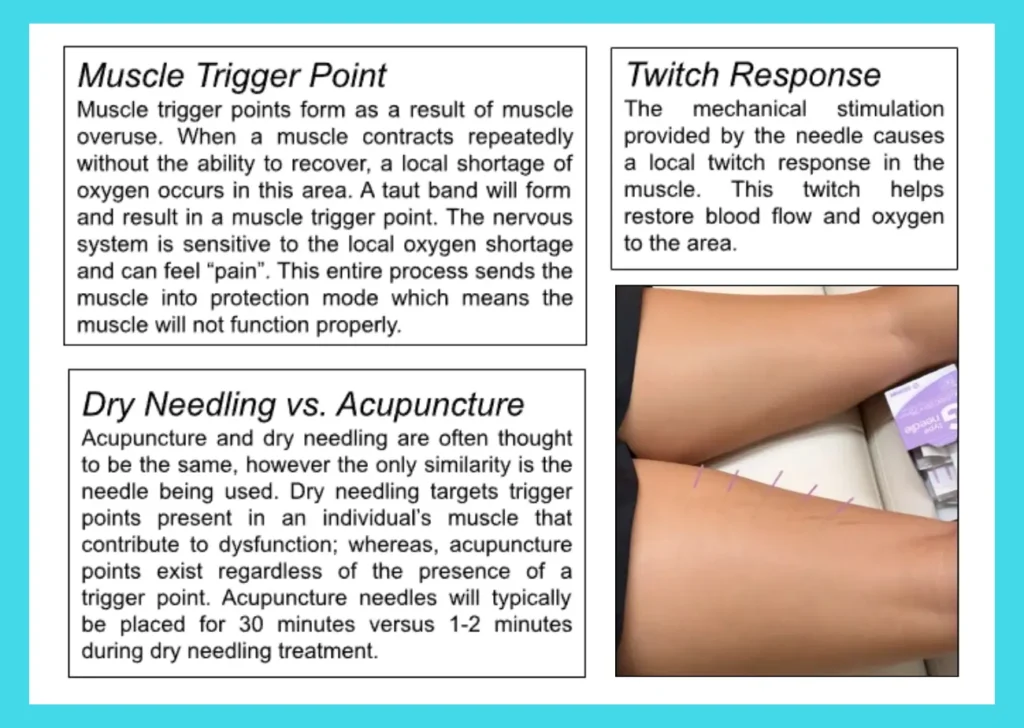Have you ever imagined being able to get rid of chronic, deep-seated muscle discomfort without the need for invasive treatments or medication? Welcome to the world of dry needling – a revolutionary technique that’s transforming the way we address musculoskeletal pain.
What is Dry Needling?
Dry needling is a minimally invasive procedure in which tiny needles are inserted into muscle trigger points or taut bands. Dry needling, in contrast to acupuncture, which has its roots in Traditional Chinese Medicine, targets myofascial trigger points in order to reduce pain and enhance muscular function.
The principle of dry needling is using an acupuncture needle to go through a muscle trigger point and cause a twitch response. The goal is that this twitch response will release the trigger point and the muscle will now function like it is supposed to.

Conditions It Can Address
- Chronic Pain: Back pain, neck pain, and headaches.
- Sports Injuries: Muscle strains, tendonitis, and overuse injuries.
- Repetitive Stress Injuries: Carpal tunnel syndrome and tennis elbow.
- Muscle Spasms: Often caused by nerve irritation or injury.
Benefits of Dry Needling
- Pain Relief: Effective in reducing localized pain and improving function.
- Improved Range of Motion: Helps restore flexibility and mobility.
- Faster Recovery: Accelerates the healing process for injuries.
- Minimal Side Effects: Fewer side effects compared to medication or surgery.
When should I try dry needling?
Dry needling is most indicated for people experiencing referred symptoms, meaning pain spreads beyond the point of local tissue injury. When muscle trigger points do not respond to other manual therapy techniques, it may be beneficial to try dry needling. However, dry needling is not an effective intervention by itself and should be combined with additional therapeutic exercise such as strengthening and stretching for optimal success.
Additional Resources
- Dry Needling by a Physical Therapist: What You Should Know
- Clinical Review: Dry Needling in the Management of Musculoskeletal Pain


